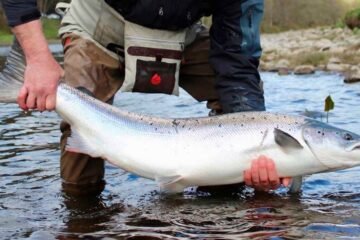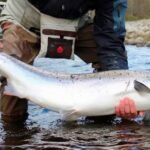Orkney and Shetland, two archipelagos off Scotland’s northern coast, are islands steeped in Viking history. With a fascinating blend of Nordic roots and Scottish influence, they stand as unique pieces of the past, where ancient traditions still thrive.
A Viking Legacy Still Alive
Shetland and Orkney’s Viking heritage is not just a relic of the past. It continues to influence daily life and cultural practices, making the islands a must-visit destination for history lovers.
In Shetland, for instance, a peculiar holiday tradition stands out. On the Wednesday following the last Tuesday in January, the island shuts down for what can only be described as an all-out celebration of Viking history. This “Up Helly Aa” festival marks the burning of a Viking galley, a ritual that has been celebrated for centuries, all the while reminding residents of their Viking roots. For locals, it’s not just a party—it’s a living, breathing connection to their ancestors.
And it’s not just Shetland that keeps the Viking flame burning. Over in Orkney, the celebrations shift from fire to football. Every Christmas Eve and Hogmanay, the streets of Kirkwall are transformed into an enormous football pitch for “The Ba,” a traditional game where the Uppies face off against the Doonies in an epic, sometimes chaotic contest. Interestingly, which team you support often hinges on your Norse ancestry.

The Sea: Lifeblood of the Northern Isles
Separated from the British mainland by the cold, unforgiving North Sea, Orkney and Shetland have long relied on the sea for their survival. The waters surrounding these islands are rich with history, not just in terms of Viking conquests but as a vital source of life.
Even today, as oil and gas exploration brings new opportunities to the islands, many locals remain connected to the sea through fishing and maritime industries. This bond with the water has defined life in these islands for centuries. It was the sea that brought the Vikings here in the 9th century, and it continues to shape the culture and economy of the islands today.
Viking Conquest and Norwegian Rule
The Viking Age left an indelible mark on these islands. When the Vikings arrived in the 9th century, they didn’t just raid and plunder—they stayed. These islands, with their strategic position between Scandinavia and the British mainland, were perfect for establishing a base. The Vikings settled in Orkney and Shetland, bringing with them their language, customs, and governance.
For nearly 600 years, these islands were ruled by Norway. In fact, they were part of the Kingdom of Norway until 1468, when King Christian I of Norway pledged Orkney and Shetland to King James III of Scotland as part of a dowry for his daughter Margaret. That dowry, however, was never paid, sparking the view among some historians and islanders that the islands should still be Norwegian.
A Modern Debate: Should Orkney and Shetland Return to Norway?
The question of whether these islands should belong to Scotland or Norway is not just historical. In recent years, the issue has resurfaced in local politics. In 2023, a member of the Orkney Islands Council even proposed a motion calling for a referendum to decide whether the islands should return to Norwegian rule. While this motion was not successful, it highlights the complex identity of the Northern Isles and their lingering ties to Scandinavia.
It’s no wonder, then, that many islanders feel more Nordic than Scottish. The presence of Norwegian flags on the streets of Lerwick during Norwegian Constitution Day, for instance, is a clear sign of the cultural ties that persist. Residents of Shetland and Orkney speak of their Viking roots with pride, and the cultural practices they continue to observe reflect this deep connection to their Norwegian past.
Viking Influence Today: A Snapshot
-
Shetland’s Up Helly Aa: A Viking-inspired festival featuring the burning of a Viking galley.
-
Orkney’s “The Ba”: A traditional football game that pits the Uppies against the Doonies, often defined by Norse ancestry.
-
Norwegian Symbols: Norwegian flags and folk music dominate celebrations, especially in Shetland.
A Visit to Orkney and Shetland
To truly grasp the historical significance of these islands, it’s essential to visit them. The streets of Lerwick, Shetland’s largest town, are lined with more Norwegian flags than Scottish ones, and the air is filled with traditional Scandinavian folk songs rather than the sound of bagpipes. Visitors will quickly realize that, in many ways, Orkney and Shetland are more Scandinavian than Scottish.
Locals often joke that they don’t own kilts, instead proudly wearing their Viking-inspired heritage. It’s a unique blend of old and new, where the past still influences the present in the most tangible ways.


















